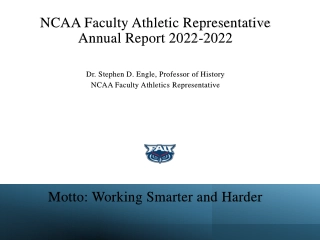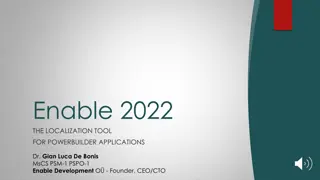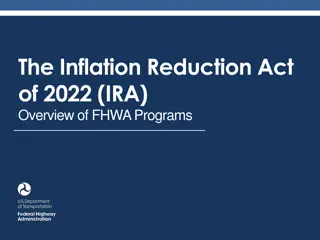
Understanding B-Cell Development & the Humoral Immune Response
Explore the intricate process of B-cell development and the humoral immune response, including mature B-cell markers, B-cell antigen receptors, and T-cell-independent antigens in this informative content. Gain insights into the key components essential for effective immunologic function.
Download Presentation

Please find below an Image/Link to download the presentation.
The content on the website is provided AS IS for your information and personal use only. It may not be sold, licensed, or shared on other websites without obtaining consent from the author. If you encounter any issues during the download, it is possible that the publisher has removed the file from their server.
You are allowed to download the files provided on this website for personal or commercial use, subject to the condition that they are used lawfully. All files are the property of their respective owners.
The content on the website is provided AS IS for your information and personal use only. It may not be sold, licensed, or shared on other websites without obtaining consent from the author.
E N D
Presentation Transcript
B-Cell Development & the Humoral Immune Response
Mature B-cells markers The IgM and IgD on any individual lymphocyte both incorporate the same light chains and have identical antigen specificity. Other surface markers that appear on mature B lymphocytes include complement receptors (CR1 and CR2, the latter also known as CD21); a membrane-anchored enzyme called 5 - nucleotidase (CD73), whose function is unknown;
Mature B-cells markers the lectin-like oligosaccharide-binding protein CD23; and the adhesion proteins leukocyte function-associated antigen-1 (LFA-1), intercellular adhesion molecule-1 (ICAM-1), and CD22. Individual cells also begin to express surface-homing receptors, such as L- selectin, which target them to lymph nodes or other peripheral sites. At about the same time, the cells acquire class II major histocompatibility complex (MHC) proteins, which enable them to present antigens to helper T cells, and they also begin surface expression of CD40 a protein involved in receiving T-cell help With the acquisition of these various accessory molecules, the mature B lymphocytes become competent for immunologic function.
THE B-CELL ANTIGEN RECEPTOR membrane immunoglobulin is retained in the endoplasmic reticulum unless it can associate with two additional proteins expressed exclusively in cells of the B-cell lineage. These proteins, called Ig- and ,ig- associate with membrane immunoglobulin to form the B-cell antigen receptor (BCR), which can transit to the cell surface (Figure 8-3A). Ig- and Ig- are transmembrane glycoproteins, each of which has a moderately large cytoplasmic domain. These cytoplasmic domains each include a short region important for transmitting into the cell a signal indicating that antigen has bound. This region is called an immunoreceptor tyrosine-based activation motif (ITAM), and its key features are two precisely spaced tyrosine residues within a partially conserved surrounding sequence
T-CELL-INDEPENDENT ANTIGENS the TI-1 antigen lipopolysaccharide (LPS), from gram- negative bacterial cell walls, can induce immunologic defense reactions in a number of invertebrate as well as vertebrate organisms. Mammalian cells recognize LPS with Toll-like receptor 4 (TLR4) and several other bacterial cell wall components with the closely related TLR2. Interestingly, at low concentrations TI-1 antigens often do elicit an antigen-specific antibody response. It has been postulated that this occurs because BCRs that specifically recognize the TI-1 antigen can concentrate it onto the surfaces of specific B cells, where it can then stimulate Toll-like receptors more efficiently and trigger activation
TI-2 antigens do not have polyclonal B-cell activator properties, nor do they activate macrophages. These antigens are generally highly repetitive polymeric antigens such as polysaccharides from bacterial cell walls, or polymeric protein structures such as bacterial flagella. It has been postulated that their B-cell- activating properties derive from their ability to cross-link numerous BCR molecules and induce either intense, or especially prolonged, intracellular-signaling reactions
B-cell activation by a helper T cell. Antigen-specific B cells are stimulated by antigen contact with the B-cell receptor (BCR). They also take up the antigen (Ag) for digestion into peptides that combine with class II major histocompatibility complex (MHC) molecules and then go to the cell surface to be presented to antigen- specific helper T cells. T-cell-receptor (TCR)-based recognition of the antigen leads to T-cell activation, which stabilizes the association between the T and B cells and induces T-cell synthesis of CD40L and cytokines, which provide coactivating signals for the B cell.
IMMUNOGLOBULIN SECRETION The shift from producing membrane-bound to secreted immunoglobulin that occurs in plasma cells reflects a subtle change in the structure of the heavy-chain mRNA. The short hydrophobic tail that anchors a heavy-chain protein onto the cell membrane is encoded by the final two exons of every CHregion; when a B cell differentiates into a plasma cell, it produces an alternative form of heavy-chain mRNA that lacks these final exons and so encodes a heavy-chain protein that can be secreted from the cell (see Figure 3-4).
THE HEAVY-CHAIN CLASS SWITCH Heavy-chain class switch. A: During clonal proliferation of an activated memory B cell, some daughter cells may arise that express a different heavy-chain isotype and pass this trait on to their progeny. B: Class switching takes place when a fully assembled heavy- chain locus undergoes an additional DNA rearrangement event that places a new CHsequence adjacent to the V/D/J exon. This occurs by deletion of the intervening CHexons and is carried out by an enzymatic pathway distinct from that of V/D/J rearrangement. In the example shown, the gene switches to the C 2isotype
SOMATIC HYPERMUTATION Fully assembled V/J and V/D/J exons in B cells undergo point mutation at an unusually high rate during the course of an immune response. The mechanism of this phenomenon, termed somatic hypermutation, is unknown but appears quite specific in that adjacent regions on the chromosome (including the CHexon) are not affected. As the mutations are introduced into the variable region exon at random, they can have the effect of either increasing or decreasing affinity of the resulting immunoglobulin for its target antigen
PRIMARY & SECONDARY HUMORAL RESPONSES
B-CELL TOLERANCE many autoreactive B cells initially express light chains; in those cells, the reactivated recombinase is able to carry out a special type of DNA rearrangement in which a VKor JKsegment in the active becomes fused to a site downstream of the C segment, which is called the (Figure 8-10). As a result of this rearrangement, the C segment and other important regions are deleted, the gene is permanently inactivated, and the cell can then attempt to assemble a new or other chromosomes. This process has been called receptor editing. If the - gene locus - deleting element gene on one of its
B-CELL TOLERANCE This mechanism acts only on B cells in peripheral tissues and relies on the fact that B- cell activation by most protein antigens requires the participation of helper T cells. When a mature B cell contacts antigen in the absence of appropriate T-cell help, the B cell either dies or loses its ability to carry out an immune response. The fate of the B cell depends on the physical nature of the antigen involved.
B-CELL TOLERANCE In the case of membrane-bound or particulate antigens, the self-reactive B cell generally dies ese a phenomenon referred to as clonal deletion. Soluble protein antigens, which presumably generate weaker signals through the BCR of a self-reactive B cell, do not cause cell death but instead make the cell unresponsive to activating stimuli a phenomenon called clonal anergy. Anergic B cells can become activated under some circumstances, so clonal anergy is thought to be a less absolute mechanism for enforcing tolerance to self






















